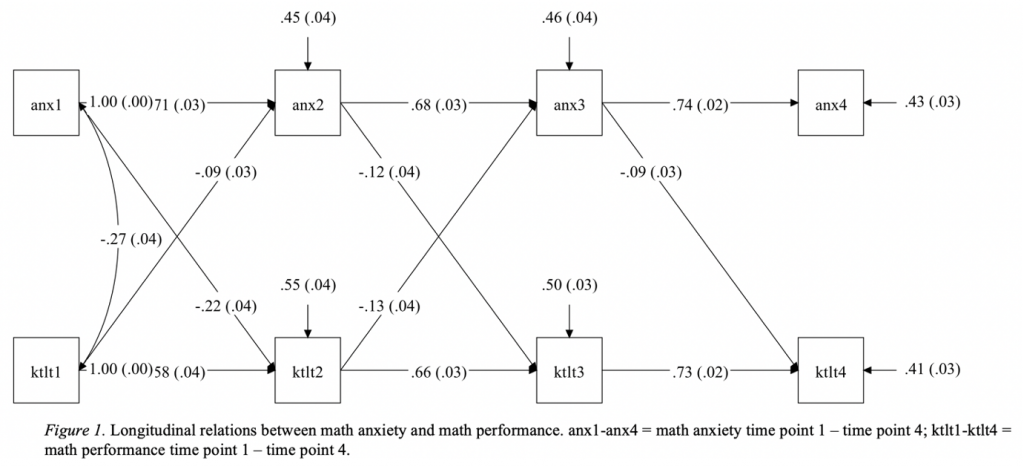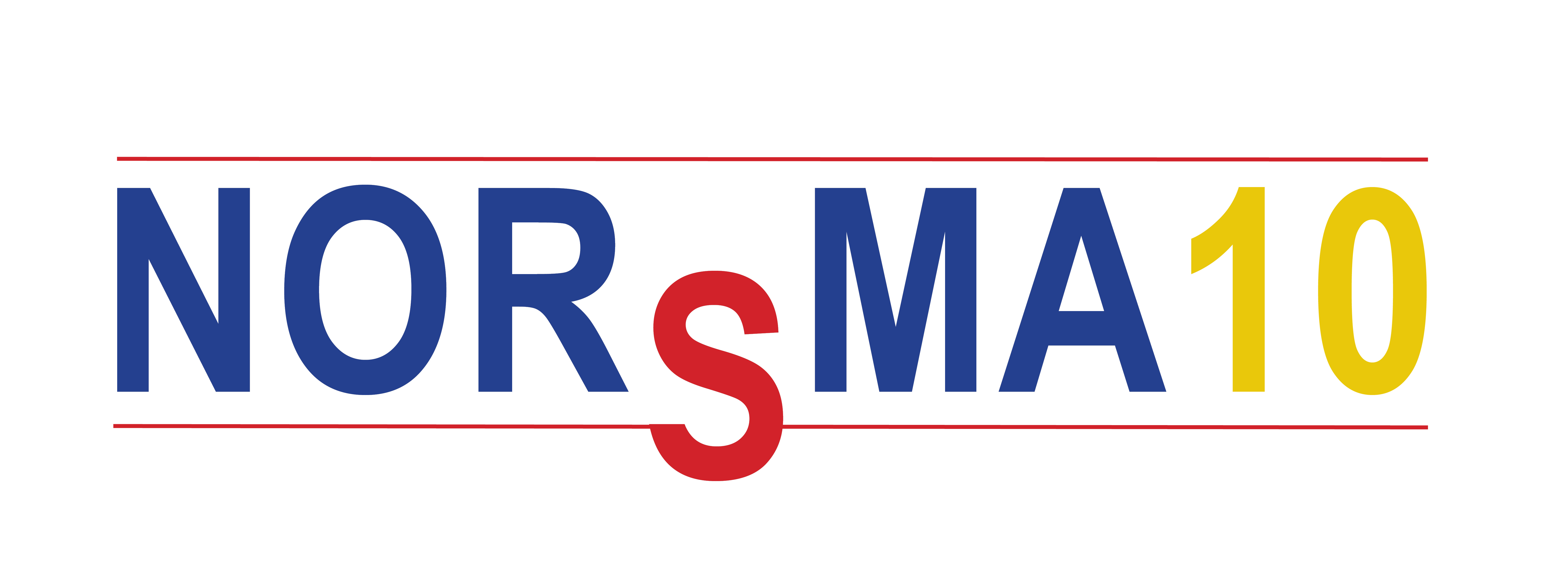JOIN EVENT
Session chair: Johan Korhonen
Paper 1: What makes it so difficult at upper secondary school? School staff’ views of what influences vocational students’ poor goal achievement in mathematics
Karoline Holmgren, Umeå University, Department of Science and Mathematics Education, karoline.holmgren@umu.se
PRESENTATION (PDF)
Abstract
This paper reports findings of an ongoing project about mathematics at vocational programs in a Swedish upper secondary school aiming to deepen the understanding of what influences students’ goal achievement in mathematics.
An upper secondary school diploma is a key to successful establishment in the labor market and is important to both society and the individual. Without a diploma young people risk unemployment and poverty (Lundahl et al., 2015). It is therefore alarming that approximately 15 000 Swedish students (19,6%) each year fail to obtain a final diploma. Further examination shows that the mathematic course (Ma1a), which is a mandatory course for all vocational students during their first year, is the biggest obstacle of getting the final diploma for students at vocational programs (SNAE, 2017). Difficulties with Ma1a is also confirmed by research conducted among vocational students and their teachers (Johansson, 2017; Muhrman, 2016).
Swedish students need an approved grade in mathematics from lower secondary school (age 13-16) to be admitted to a vocational program. It is somewhat surprising that Ma1a becomes so difficult since the content does not differ significantly from the content students met in lower secondary school, i.e. Ma1a is, or at least should be, mostly revision. Although these students have passed mathematics in year 9 in lower secondary school, they have difficulties passing a course with the same content one year later (SNAE, 2017). Studies addressing mathematical difficulties at vocational programs are few (Bakker, 2014). Therefore, it is of interest to investigate why a large group of the vocational students have difficulties with Ma1a and what is affecting their goal achievement during the first year at the upper secondary school.
The paper focuses on aspects derived from semi-structed interviews with 20 school staff (teachers, school nurses, school counselors, principals) meeting vocational students in risk. The result shows the diversity and complexity of aspects influencing students’ goal achievement. Several of the identified aspects influencing goal achievement in Ma1a are linked to social, affective and identity factors which suggests that students in risk need to be understood from more perspectives than only the perspective of mathematics content or didactics. Explanations of students’ mathematic difficulties must be sought on a broad basis otherwise there is a risk that adaptations and support will not be effective tools. The result also shows that different school staff talk about student in risk from different perspectives which may have implications for the support offered to the students. Different perspectives may imply different actions for improvement to the same problem and different actions may have different outcome. The findings in this study mirror parts of previous research, but also highlight a need for further research to investigate both social, affective and identity aspects concerning vocational students goal achievement in mathematics.
References
Bakker, A. (2014). Characterizing and developing vocational Mathematical knowledge. Educational Studies in Mathematics, 86(2), 151–156.
Johansson, M. (2017). Social inequalities in the allocation of learning support in a Swedish upper secondary school. Education, Citizenship and Social Justice, 12(1), 63–74.
Lundahl, L., Lidström, L., Lindblad, M., Lovén, A., Olofsson, J., & Östh, J. (2015). Osäkra övergångar. In Vetenskapsrådets resultatdialog 2015 (Vol.1, pp107-116). Vetenskapsrådet
Muhrman, K. (2016). Inget klöver utan matematik: En studie av matematik i yrkesutbildning och yrkesliv. (Doctoral thesis, Linköpings Universitet, Linköping).
SNAE (2017). Nära examen. En undersökning av vilka kurser gymnasieelever med studiebevis saknar godkänt i för att få examen. Dnr 2017:461. Stockholm: Skolverket.
Paper 2: Reciprocal Effects of Mathematics Performance, School Engagement, and Burnout during Adolescence
Anna Widlund, Faculty of Education and Welfare Studies, Åbo Akademi University, Vasa. Co-authors: Heta Tuominen & Johan Korhonen
Abstract
School engagement and burnout reflect positive and negative, as well as cognitive and affective aspects of students’ subjective well-being, and combined, they are considered as central concepts for understanding students’ emotional and academic functioning in school (Leiter & Maslach, 2017). School engagement is viewed as a cognitive-affective state defined as a positive, study-related state of mind comprised of energy, dedication, and absorption. School burnout, in turn, emerges as a negative response to students’ ongoing difficulties in coping with school-related stress, comprised by exhaustion, feelings of inadequacy, and cynical attitudes toward school. These sub-dimensions are often considered separately, as they seem to be differently associated with various outcomes (e.g., performance).
Although the relationship between engagement, burnout, and performance is well documented (Lei et al., 2018; Madigan et al., 2020), the majority of previous studies have been cross-sectional, offering limited evidence in terms of causation. More evidence is also needed regarding the reciprocal relationships between student performance and well-being. Considering the recent decline in students’ engagement and increase in burnout, as well as the prevailing (societal) view of mathematics as a key academic domain with important implications on further educational attainment, it seems important to extend previous knowledge on how engagement and burnout co-develop and interrelate with mathematics performance. Thus, to clarify these processes, this study aimed to investigate concurrent and cross-lagged pathways of adolescents’ mathematics performance (test scores), school engagement, and burnout (exhaustion, cynicism, and inadequacy) during the course of lower secondary education.
The participants (N = 1132) came from five lower secondary schools in Finland. Students completed a standardized mathematics test and measures of engagement (Schoolwork Engagement Inventory) and burnout (School Burnout Inventory) at four time points (2016-2019), twice within 7h grade (fall and spring) and 9th grade (fall and spring), spanning ages 13-15. Measurements were conducted in schools by trained research assistants during teacher-selected lessons. All students who participated at least once across the time points were included in the study.
A random intercept cross-lagged panel model (Figure 1) fitted the data well [χ2(70) = 120.951, p < 0.001, RMSEA = 0.025, CLI = 0.994, TLI = 0.984]. The results revealed that engagement was an initial predictor of mathematics performance: high engagement predicted higher performance, both within the school years and long-term, from 7th to 9th grade. Performance only predicted engagement later on, within 9th grade. Short-term effects of mathematics performance were also found on school burnout: higher performance lowered students´ feelings of inadequacy within both 7th and 9th grade, and also, students’ cynical attitudes within 9th grade. The effects of burnout on performance were only found long-term: higher levels of exhaustion increased students’ performance from 7th to 9th grade, whereas feelings of inadequacy lowered students’ performance.
In sum, we found evidence of reciprocal relationships between mathematics performance, engagement, and burnout, but also, that engagement might be a slightly more prominent initial predictor of both performance and burnout and that the relationships between all constructs seemed to become more prominent over time during adolescence. The results highlight the importance of supporting not only students’ academic performance but their well-being in school as well, as students’ feelings towards school clearly play a role in their learning processes in mathematics.
Figure 1: Cross-Lagged Pathways of Mathematics Performance, Engagement, and Burnout

References:
Lei, H., Cui, Y., & Zhou, W. (2018). Relationships between student engagement and academic achievement: A meta-analysis. Social Behavior and Personality.
Leiter, M., & Maslach, C. (2017). Burnout and engagement: Contributions to a new vision. Burnout Research.
Madigan, D., & Curran, T. (2020). Does Burnout Affect Academic Achievement? A Meta-Analysis of over 100,000 Students. Educatio
Paper 3: Longitudinal relations between math anxiety and math performance in Finnish adolescent students
Johan Korhonen, Åbo Akademi University, Vasa, jokorhon@abo.fi. Co-authors. Anna Widlund, & Pekka Räsänen
Abstract
Despite the high prevalence of math anxiety, it is poorly understood how math anxiety (MA) is related to math performance. The few longitudinal studies that have investigated the link between MA and math performance in primary/lower secondary students are inconclusive; either MA was predictive of math performance, math performance was predictive of MA, or they exhibited a bidirectional relationship (Cargnelutti, Tomasetto, & Passolunghi, 2017; Sorvo et al., 2019). Thus, the current study sought to investigate the concurrent and longitudinal relations between MA and performance in a sample of adolescent students (N = 1131) from grade seven to grade nine (4 time points). Math anxiety was measured with the Math Anxiety Scale for Adolescents (MASA: Korhonen & Räsänen, in preparation) and math performance was measured with a standardized math test (Räsänen et al., 2013). Concurrently, math anxiety and performance showed a stable negative association within all time points (Table 1). Path analyses revealed that anxiety and performance mostly exhibited a reciprocal relationship over time (Figure 1). These findings suggest that the negative relation between MA and mathematics performance may be developmentally continuous, negatively affecting each other in a vicious cycle.


References
Cargnelutti, E., Tomasetto, C., & Passolunghi, M. C. (2017). How is anxiety related to math performance in young students? A longitudinal study of Grade 2 to Grade 3 children. Cognition and Emotion, 31(4), 755-764.
Korhonen, J., & Räsänen, P. (in preparation). Dimensionality of math anxiety and its longitudinal associations with math performance in adolescent students.
Räsänen, P., Linnanmäki, K., Korhonen, J., Kronberg, N., & Uppgård, A. (2013). KTLT mathematical achievement test – Finnish-Swedish version [Online measurement]. Location: www.neure.fi.
Sorvo, R., et al., (2019). Development of math anxiety and its longitudinal relationships with arithmetic achievement among primary school children. Learning and Individual Differences, 69, 173-181.
